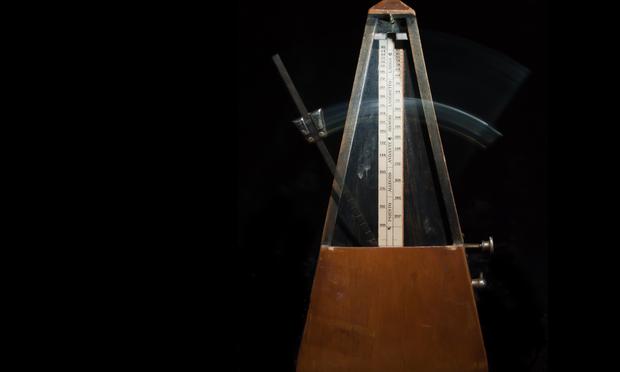3 Ways to Metronome
 A student walked into her lesson a few weeks ago and the first words out of her mouth were: “Ms. Sarah, the metronome is an amazing thing”. I was so dumbfounded by the wisdom of what this student said (being so young, I was shocked she would ever admit it), that it nearly knocked me over.
A student walked into her lesson a few weeks ago and the first words out of her mouth were: “Ms. Sarah, the metronome is an amazing thing”. I was so dumbfounded by the wisdom of what this student said (being so young, I was shocked she would ever admit it), that it nearly knocked me over.
Unfortunately, most of my students do not share this sentiment. The more common reaction to the metronome is: “it makes me mess up”… Right… So, what do you do when your student hates using the metronome but still needs work on their rhythm? Here are a few tricks I have discovered that help student’s rhythm without the boredom of the metronome:
- Have them practice with Drum-tracks. As soon as I turn on a pre-recorded drum beat, students start bobbing their heads along to the music (forget Mozart in the Jungle, imagine Mozart at the club). This is because they feel the music. It’s like a composer friend of mine who writes electronic dance music once remarked, “If I can’t feel the bass it’s no good. I need to feel it pounding in my chest.” Some students just need to feel how counting relates to movement. Drum tracks make this happen, almost instantly. You can find drum tracks online, you can make your own, and a lot of electronic pianos have them already installed. A fun project for your student is to show them how to make their own drum track using a digital audio workstation (DAW). This gives you an opportunity to talk about meter, time signatures, pulse, and the expressive qualities of tempo.
- Provide accompaniment tracks for your student. If you can convince a student that it is important enough to count so they can play along, you provide incentive for them to play accurately. Accompaniment tracks provide that incentive. I have found that my students cannot ignore the dissonance created when their counting is misaligned. MusicMinusOne is a great company that provides accompaniment tracks for concertos and Sonatas, but publishing companies such as Alfred, Hal-Leonard, Suzuki, Frederick Harris, and various independent publishing companies also have recordings that go along with their curriculum. Occasionally, I make my own when the curriculum does not provide them.
- Play duets with your student. For students that aren’t at the level where they can hold their own in an ensemble setting, having their teacher play with them can be a huge learning experience. And let’s face it, playing with your teacher is cool! That is why I like using the Sassmannshaus Method for Strings, and the Alfred Premier Method for Piano. They have written out duets for each song that the student can play with their teacher. Much like accompaniment tracks, these duets provide incentive for your student to practice accurately… So they can play with you!
Once a student understands the importance of the metronome and how it relates to the music-making, they usually find their way back to using the metronome sans cattle-prod. But who says they have to use a device called a “metronome” anyway?
